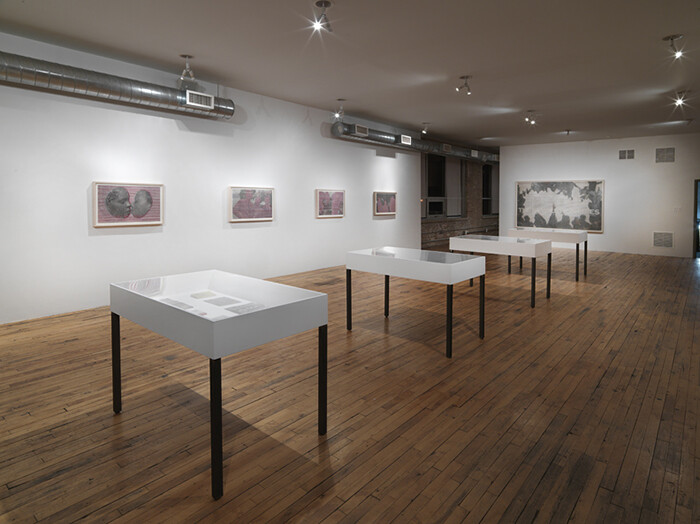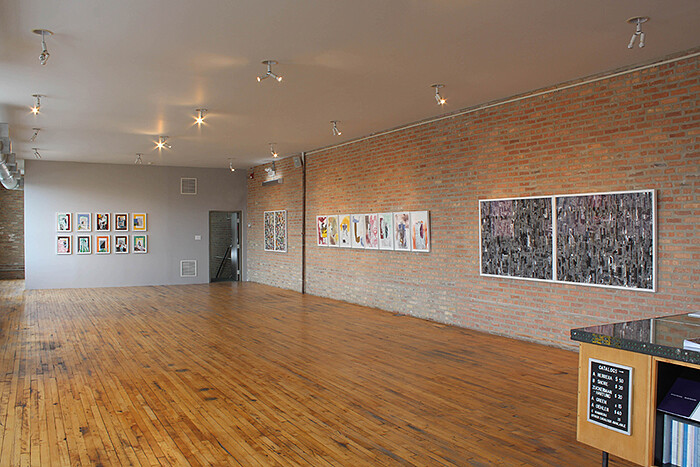Categories
Subjects
Authors
Artists
Venues
Locations
Calendar
Filter
Done
January 15, 2014 – Review
John Sparagana’s “Crowds & Powder”
Daniel Tucker

It is tempting to venerate images of bodies gathered, simply because they are seductive. They contain the charge of all that is political—the possibility of power in conflict. For this reason, they appear consistently in the mediated distribution channels and propaganda produced by the powerful and the powerless alike, ranging from cable news to social media, serving as manipulated evidence of legitimacy, potential, and control that stands in for and tells the stories of political events. The appearance of such “image-myths” preoccupies John Sparagana’s recent body of work at Corbett vs. Dempsey.
In his 1960 socio-historical tome Crowds and Power, Bulgarian-born author Elias Canetti identifies a distinction between the open and closed form of a crowd. The open crowd is characterized chiefly by its desire to grow, and when growth ceases, it dissipates. Conversely, the closed crowd “renounces growth” and by putting up boundaries, it “creates a space for itself which it will fill.”(1) While the open crowd has impressive spontaneity, the closed crowd remains stable because it is such a controlled form of gathering that the crowd knows it can reform and reassemble as needed, and often at regular intervals.
The Houston-based Sparagana utilizes images of both open and closed crowds …
June 26, 2012 – Review
Arturo Herrera’s "Series"
Michelle Grabner

Collage is Arturo Herrera’s preferred medium. He deploys its vast paper-based vocabulary the same way an abstract painter would activate a range of color, mark, stroke, and line. But it is the juxtaposition of disparate imagery, structural invention, and the disjunction of fragments and surfaces that drive his collages. Critic George Baker writes that rather than being the medium of the “new,” as it was in the early twentieth century with the work of Picasso and Braque, that “collage was born instead of dilapidation and decrepitude, at its best with yellowed, crumbling newspaper, fading wallpaper, and discarded junk, and trash. It was a language of depletion and deletion, more destructive than constructive in its essence.” (1) That is to say, in the Modern trajectory, collage and the medium’s many political positions are not the overarching foundations to Herrera’s formally scrupulous compositions. Instead, Herrera’s collages occupy an indistinct state, bringing together fragments to create a mimetic effect, piecing together found imagery so that archetypal psychology can make claims to the cognitive processes of memory, awareness, and recognition. With pragmatic elegance from his worktable, Herrera achieves this with scissors, glue, and a nearly endless reserve of found material.
His exhibition at Corbett vs. …